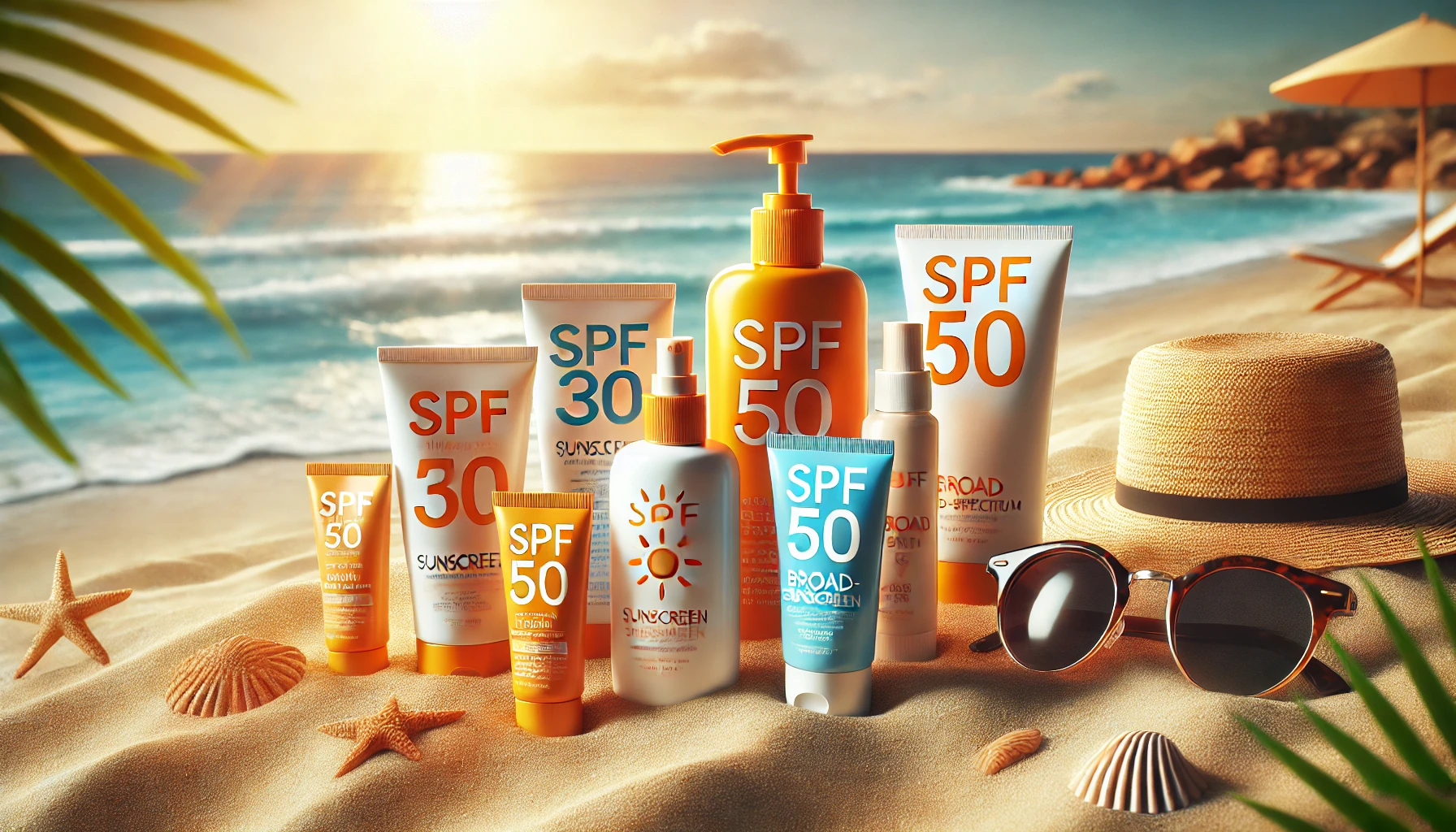Sunscreen is a vital part of any skincare routine. Not only does it protect your skin from harmful UV rays, but it also helps prevent premature aging, sunburn, and skin cancer. However, choosing the right sunscreen can be overwhelming with so many options available. This guide will help you pick the perfect sunscreen for your unique skin type and lifestyle.
Why Sunscreen Is Essential
The sun emits two types of harmful ultraviolet (UV) radiation:
- UVA rays: These penetrate deep into the skin, causing premature aging and wrinkles.
- UVB rays: These affect the outer layers of the skin, leading to sunburn and increasing the risk of skin cancer.
Using a broad-spectrum sunscreen protects you from both UVA and UVB rays, ensuring comprehensive skin protection.
Understanding Your Skin Type
Before choosing a sunscreen, it’s essential to know your skin type. Here’s a quick guide:
- Oily Skin: Often shiny with enlarged pores.
- Dry Skin: Feels tight and may have flakiness or rough patches.
- Combination Skin: Oily in some areas (e.g., T-zone) and dry in others.
- Sensitive Skin: Prone to redness, irritation, or allergic reactions.
Types of Sunscreens
There are two main types of sunscreens:
- Physical Sunscreens
- Contain minerals like zinc oxide and titanium dioxide.
- Form a protective layer on the skin, reflecting UV rays.
- Ideal for sensitive skin as they’re less likely to cause irritation.
- Chemical Sunscreens
- Absorb UV rays and convert them into heat, which is then released from the skin.
- Lightweight and often easier to apply.
- Great for daily use under makeup but may not suit sensitive skin.
Choosing Sunscreen for Your Skin Type
1. Oily Skin
- Look for: Oil-free, lightweight, and non-comedogenic formulas.
- Best options: Gels, sprays, or water-based sunscreens.
- Ingredients to avoid: Heavy oils or thick creams that can clog pores.
- Example products: Sunscreens labeled “mattifying” or “shine control.”
2. Dry Skin
- Look for: Hydrating sunscreens with added moisturizers.
- Best options: Cream or lotion-based sunscreens.
- Ingredients to include: Hyaluronic acid or glycerin for added hydration.
3. Combination Skin
- Look for: Lightweight formulas that balance hydration and oil control.
- Best options: Hybrid sunscreens (a mix of physical and chemical).
4. Sensitive Skin
- Look for: Fragrance-free and hypoallergenic options.
- Best options: Physical sunscreens with zinc oxide or titanium dioxide.
- Ingredients to avoid: Oxybenzone, fragrances, or alcohol.
Understanding SPF
SPF (Sun Protection Factor) measures how well sunscreen protects against UVB rays. Here’s a breakdown:
- SPF 15: Blocks about 93% of UVB rays.
- SPF 30: Blocks about 97%.
- SPF 50: Blocks about 98%.
While higher SPF offers more protection, no sunscreen blocks 100% of UV rays. For everyday use, SPF 30 or higher is recommended.
Other Key Factors to Consider
1. Broad-Spectrum Protection
Ensure the sunscreen offers broad-spectrum protection to shield your skin from both UVA and UVB rays.
2. Water Resistance
If you’re swimming or sweating, opt for water-resistant sunscreen. However, remember to reapply every two hours.
3. Skin Tone
People with darker skin tones should look for sunscreens that don’t leave a white cast. Chemical or tinted physical sunscreens are excellent options.
4. Lifestyle and Activities
- Daily wear: Lightweight, non-greasy sunscreens work best.
- Outdoor activities: Choose SPF 50+ with water resistance.
How to Apply Sunscreen
- Apply sunscreen generously to all exposed skin, including your face, neck, ears, and hands.
- Use about a shot-glass amount (2 tablespoons) for your body and a nickel-sized amount for your face.
- Reapply every two hours or immediately after swimming or sweating.
Final Thoughts
Choosing the right sunscreen doesn’t have to be daunting. By understanding your skin type and considering factors like SPF, broad-spectrum protection, and texture, you can find a sunscreen that perfectly suits your needs. Remember, sunscreen is your best defense against sun damage, so make it a non-negotiable part of your daily skincare routine.


